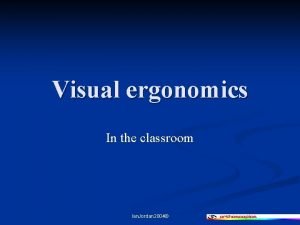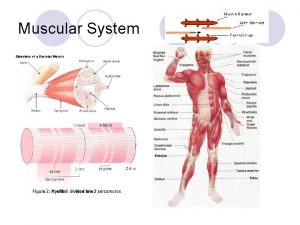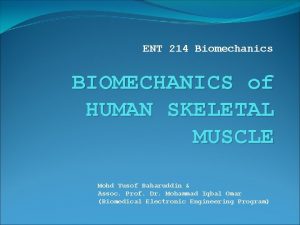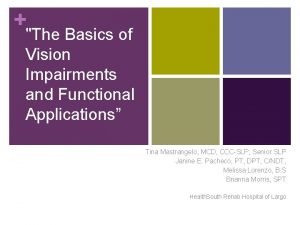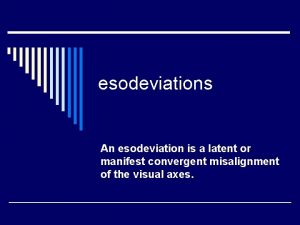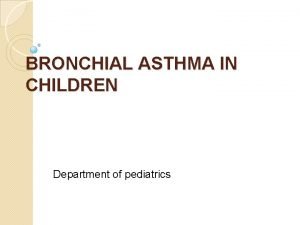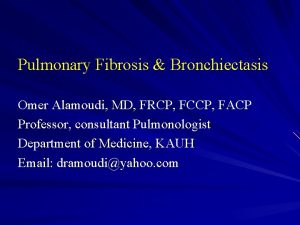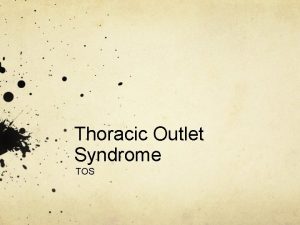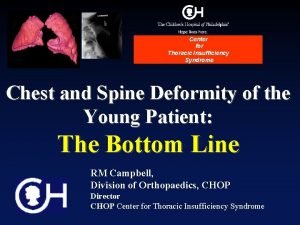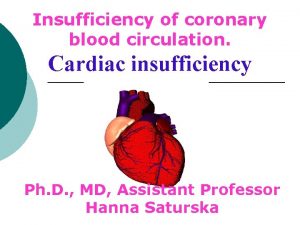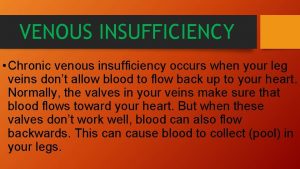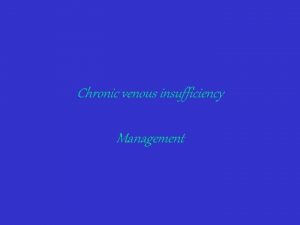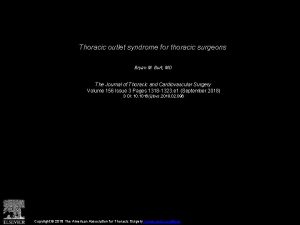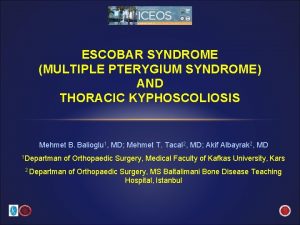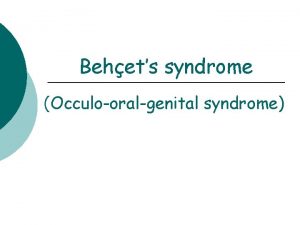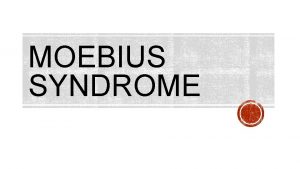Center for Thoracic Insufficiency Syndrome The Etiology of




















- Slides: 20

Center for Thoracic Insufficiency Syndrome The Etiology of Thoracic Insufficiency Syndrome in Neuromuscular Scoliosis based on Quantitative Dynamic Lung MRI (Qd. MRI) Campbell, RM, Udupa, J*, Flynn, J, Mayer, H, Nance, M, Panitch, H, Wang, Wei-Hsun, Tong, Y*, Wu, I*, Baldwin, K, Mc. Donough, J, Mong, A. Division of Orthopaedics, Pulmonary, Surgery, Radiology CHOP, *Medical Image Processing Group, Dept. Radiology, University of Pennsylvania

Disclosures RMC • Grant Support – National Organization of Rare Disorders ( NORD) • NORD Medical Advisory Committee member • Spinal Consultant to the FDA • Advocate for inventors/companies trying to develop safe and effective devices for children CTIS

Thoracic Insufficiency Syndrome in neuromuscular scoliosis • The thorax fails to support normal respiration or lung growth – Because of muscle weakness – Because of increased thoracic disability from deformity CTIS

Retrospective review 5 NM scoliosis pts • Avg age 7. 9 yrs, • Avg f/u 2. 13 yrs • Eifel Tower VEPTR constructs • Scoliosis 75° preop, 45° f/u. • SAL. 84 preop, . 96 at f/u. • Pelvic obliquity 19. 6° f/u 13. 6° • Complications: 2 rib cradle migrations CTIS

Dynamic Lung MRI 2 preop only, 3 pre and post op CTIS

Dynamic Lung MRILung (d. MRI) 4 -D Quantitative Dynamic MRI (Qd. MRI) ∆ LRC (lung from rib cage) ∆ LD (lung from diaphragm) CTIS ∆ LD

• The concave side would be more obstructed with less change in volume with respiration – Renal motion more obstructed • The convex side (rib hump)would have less rib cage volume changes with respiration CTIS Hypothesis

Preop Qd. MRI (5 pts) • Concave side – ∆ rib cage volume 46. 5 cc – ∆ diaphragm volume 25. 7 cc • Convex side – ∆ rib cage volume 40. 5 cc – ∆ diaphragm volume 27. 4 CTIS

Preop Qd. MRI (5 pts) • Concave side – ∆ rib cage volume 46. 5 cc – ∆ diaphragm volume 25. 7 cc • Convex side – ∆ rib cage volume 40. 5 cc – ∆ diaphragm volume 27. 4 cc CTIS

Preop Qd. MRI Concave Hemi-thorax Diaphragm volumes • 2 pts – concave ∆ diaphragm volume < convex • 1 pt – concave > convex • 2 pts – had equal volumes. CTIS

Concave Diaphragm 39. 2 cc Convex Diaphragm 20. 1 cc CTIS

Pre-op Renal Excursion Kidney excursion • Concave was 2. 58 mm • Convex 3. 02 mm. CTIS

What is normal superior/inferior reanl motion? 1 -2 mm (mm) CTIS

Post op Renal Excursion • Concave kidney excursion increased 6. 3 mm (320%) • Convex 5. 2 mm (192%). CTIS 1. 2 mm 13. 1 mm

3 pts postop Qd. MRI scans Concave side • ∆ rib cage volume increased 57% • ∆ diaphragm volume increased 128% Convex side • ∆ rib cage volume increased 72% • ∆ diaphragm volume increased 109 % CTIS

Summary • Qd. MRI can accurately assess thoracic performance parameters such as unilateral diaphragm/rib cage lung volume changes • It has great potential to increase our understanding of these diseases CTIS

Summary • VEPTR treatment appears to increase concave hemidiaphragm and convex rib hump hemi-thorax performance in TIS due to neuromuscular scoliosis – But, this needs much more study CTIS

The Future Breakthroughs in Treatment • To really advance surgical treatment of spine deformity in children, we have to better understand the dynamic biomechanical component of these diseases – X rays can’t help us much • We have the technology to do this • But we have a long way to go CTIS

The Kidney Pedicle and other structures probably play a complicated role in the pathologic biomechanics of TIS CTIS

Thank You CTIS
 Convergence insufficiency latham
Convergence insufficiency latham Types of muscle contraction
Types of muscle contraction Active insufficiency
Active insufficiency Convergence insufficiency athens
Convergence insufficiency athens Pseudo convergence insufficiency
Pseudo convergence insufficiency Trendelenburg test
Trendelenburg test Esodeviation
Esodeviation Epi 4 dogs
Epi 4 dogs Criminology etiology
Criminology etiology Etiology model
Etiology model Types of bronchial asthma
Types of bronchial asthma Pathophysiology definition
Pathophysiology definition Definition of acute appendicitis
Definition of acute appendicitis Rampant caries معنى
Rampant caries معنى Pes statment
Pes statment Etiology
Etiology Etiology synonym
Etiology synonym Etiology
Etiology Periradicular disease classification
Periradicular disease classification Amniotic fluid color abnormalities
Amniotic fluid color abnormalities Tccdtccd
Tccdtccd
